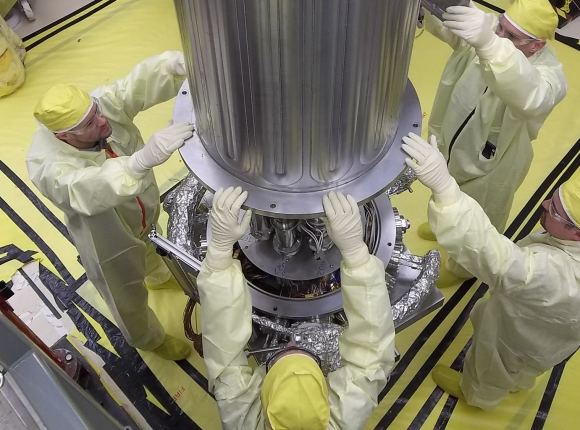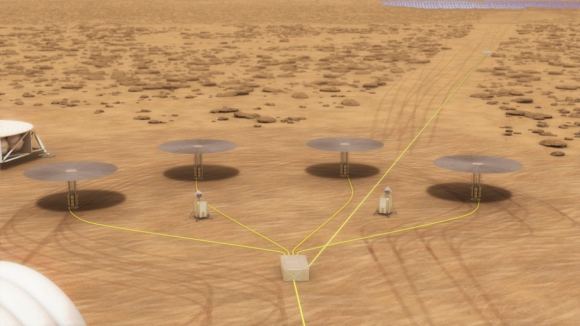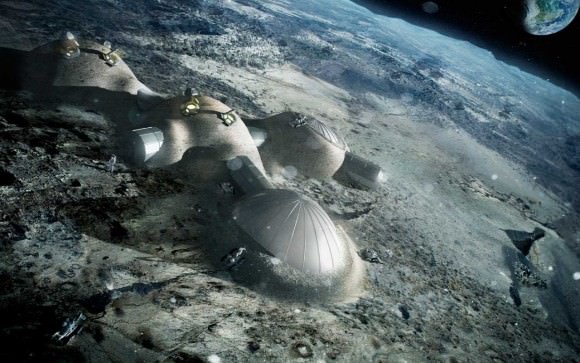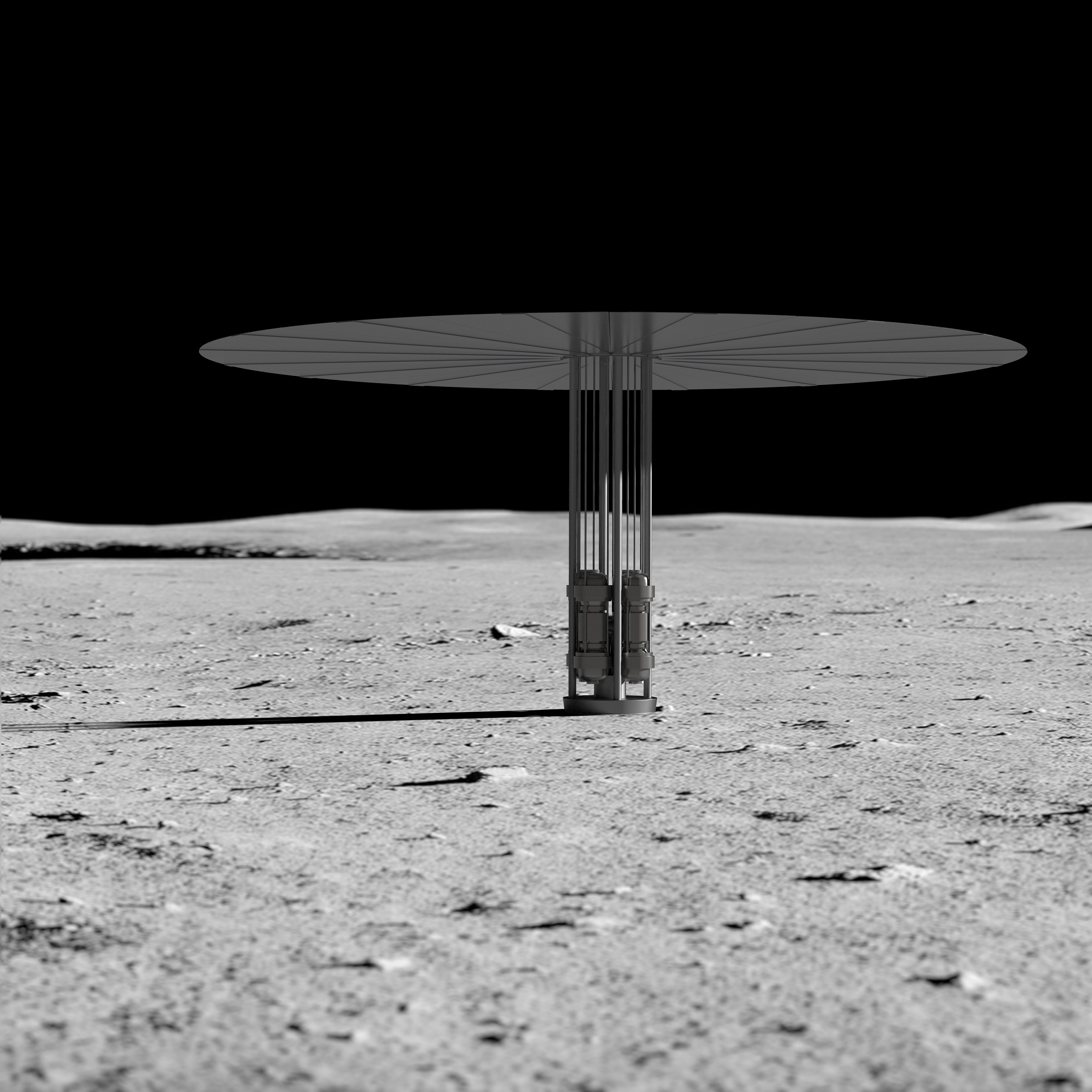Looking to the future of crewed space exploration, it is clear to NASA and other space agencies that certain technological requirements need to be met. Not only are a new generation of launch vehicles and space capsules needed (like the SLS and Orion spacecraft), but new forms of energy production are needed to ensure that long-duration missions to the Moon, Mars, and other locations in the Solar System can take place.
One possibility that addresses these concerns is Kilopower, a lightweight fission power system that could power robotic missions, bases and exploration missions. In collaboration with the Department of Energy’s National Nuclear Security Administration (NNSA), NASA recently conducted a successful demonstration of a new nuclear reactor power system that could enable long-duration crewed missions to the Moon, Mars, and beyond.
Known as the Kilopower Reactor Using Stirling Technology (KRUSTY) experiment, the technology was unveiled at a recent news conference on Wednesday, May 2nd, at NASA’s Glenn Research Center. According to NASA, this power system is capable of generating up to 10 kilowatts of electrical power – enough power several households continuously for ten years, or an outpost on the Moon or Mars.

As Jim Reuter, NASA’s acting associate administrator for the Space Technology Mission Directorate (STMD), explained in a recent NASA press release:
“Safe, efficient and plentiful energy will be the key to future robotic and human exploration. I expect the Kilopower project to be an essential part of lunar and Mars power architectures as they evolve.”
The prototype power system employs a small solid uranium-235 reactor core and passive sodium heat pipes to transfer reactor heat to high-efficiency Stirling engines, which convert the heat to electricity. This power system is ideally suited to locations like the Moon, where power generation using solar arrays is difficult because lunar nights are equivalent to 14 days on Earth.
In addition, many plans for lunar exploration involve building outposts in the permanently-shaded polar regions or in stable underground lava tubes. On Mars, sunshine is more plentiful, but subject to the planet’s diurnal cycle and weather (such as dust storms). This technology could therefore ensure a steady supply of power that is not dependent on intermittent sources like sunlight. As Marc Gibson, the lead Kilopower engineer at Glenn, said:
“Kilopower gives us the ability to do much higher power missions, and to explore the shadowed craters of the Moon. When we start sending astronauts for long stays on the Moon and to other planets, that’s going to require a new class of power that we’ve never needed before.”

The Kilopower experiment was conducted at the NNSA’s Nevada National Security Site (NNSS) between November and March of 2017. In addition to demonstrating that the system could produce electricity through fission, the purpose of the experiment was also to show that it is stable and safe in any environment. For this reason, the Kilopower team conduct in the experiment in four phases.
The first two phases, which were conducted without power, confirmed that each component in the system functioned properly. For the third phase, the team increased power to heat the core slowly before moving on to phase four, which consisted of a 28-hour, full-power test run. This phase simulated all stages of a mission, which included a reactor startup, ramp up to full power, steady operation and shutdown.
Throughout the experiment, the team simulated various system failures to ensure that the system would keep working – which included power reductions, failed engines and failed heat pipe. Throughout, the KRUSTY generator kept on providing electricity, proving that it can endure whatever space exploration throws at it. As Gibson indicated:
“We put the system through its paces. We understand the reactor very well, and this test proved that the system works the way we designed it to work. No matter what environment we expose it to, the reactor performs very well.”

Looking ahead, the Kilopower project will remain a part of NASA’s Game Changing Development (GCD) program. As part of NASA’s Space Technology Mission Directorate (STMD), this program’s goal is to advance space technologies that may lead to entirely new approaches for the Agency’s future space missions. Eventually, the team hopes to make the transition to the Technology Demonstration Mission (TDM) program by 2020.
If all goes well, the KRUSTY reactor could allow for permanent human outposts on the Moon and Mars. It could also offer support to missions that rely on In-situ Resource Utilization (ISRU) to produce hydrazine fuel from local sources of water ice, and building materials from local regolith.
Basically, when robotic missions are mounted to the Moon to 3D print bases out of local regolith, and astronauts begin making regular trips to the Moon to conduct research and experiments (like they do today to the International Space Station), it could be KRUSTY reactors that provide them will all their power needs. In a few decades, the same could be true for Mars and even locations in the outer Solar System.
This reactor system could also pave the way for rockets that rely on nuclear-thermal or nuclear-electric propulsion, enabling missions beyond Earth that are both faster and more cost-effective!
And be sure to enjoy this video of the GCD program, courtesy of NASA 360:
Further Reading: NASA

